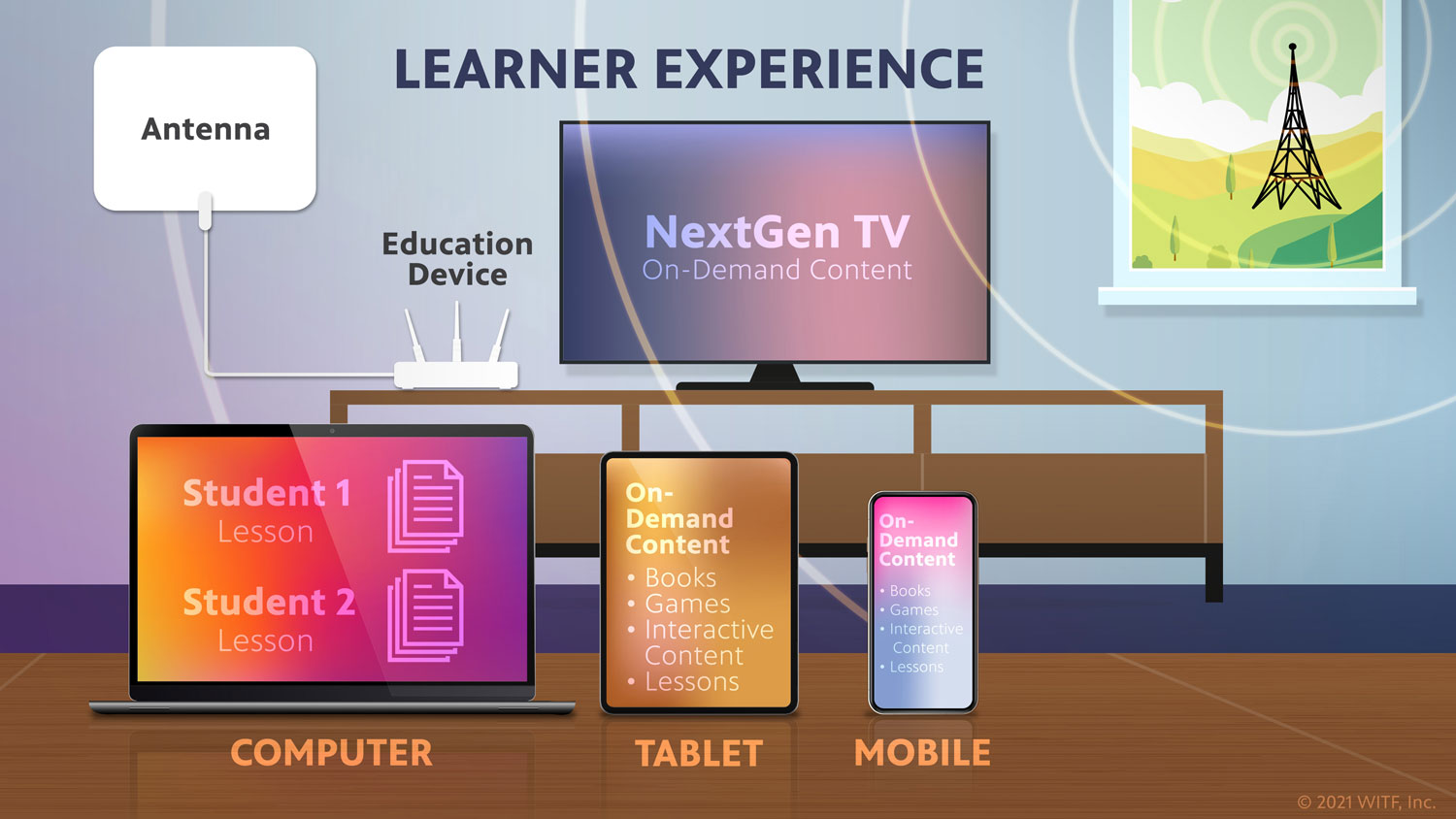Innovations in Distance Education: Datacasting
While many schools and districts have relied on educational technology to help counter the effects of COVID-19, approximately 658,000 households in the U.S. lack readily available internet access.
- In the United States, approximately one in four students doesn’t have access to reliable devices or adequate internet connections.
- According to a 2020 study by BroadbandNow Research, an estimated 42 million Americans cannot purchase broadband internet because of financial, geographic, or service limitations.
- Children from homes with an annual income of less than $25,000 are as much as 10 times less likely to engage with remote learning than children from higher earning households.
These affected students are unable to engage in remote learning or any other type of technology-based initiatives designed to help them learn. However, an opportunity exists to help alleviate the stress of not having broadband: datacasting.
What is Datacasting?
Datacasting is the one-way broadcasting of data of information through a television signal. For years, the technology has been used to deliver encrypted and targetable public safety data to police, fire and other first responders. Using the technology, educators can send targeted standard curriculum and instructional activities to students for them to access on their mobile devices. Datacasting serves rural and urban students in communities that do not have access to the internet. Datacasting is free to users with a receiver.
Datacasting supports students who do not have broadband connectivity and offers the opportunity for students without the internet to increase access to educational resources in underserved communities. The use of datacasting goes beyond the current remote learning happening as a result of COVID-19. States are supporting districts and schools to use datacasting to support afterschool learning, summer learning, students in the juvenile justice system, and workforce development for adult learners. Datacasting allows for other learning management systems such as Schoology or Google Classroom to be provided to students that do not have access to broadband.

Who Currently Utilizes Datacasting?
Pennsylvania, South Carolina, Indiana, South Dakota, and Kentucky use their Coronavirus Aid, Relief, and Economic Security (CARES) Act which authorizes governors to determine the educational use of Governor's Emergency Education Relief (GEER) Funds. These states used their GEER funding to expand their state's datacasting or education channel capabilities. Currently, South Carolina has 34 districts enrolled and they are conducting a pilot program in three of 34 school districts.
AIR's Community of Practice
Through AIR’s organizational structures like our communities of practice (CoP) format and Innovation Hub, we are able to bring together stakeholders from state education agencies, libraries, and public broadcast stations to discuss best practices and how to address potential hurdles in datacasting implementation. Together with our subject matter experts, we facilitate bi-monthly convenings and provide research informed policy and practices to support states’ implementation of datacasting.
This community of practice will advance work nationally to reach the most underserved and disconnected learners. The convenings enable members to:
- Learn from each other’s successes in policy and practice, including communication and roll-out strategies.
- Coordinate among policy leaders, educational program experts, and technical experts, both across and within states.
- Share critical questions and barriers.
- Develop methods to evaluate the outcomes and impacts at pilot sites.
- Jointly assess the benefits and risks of datacasting as an educational policy and discuss its applications beyond the current crisis.
- Discuss datacasting applications beyond the traditional education system.